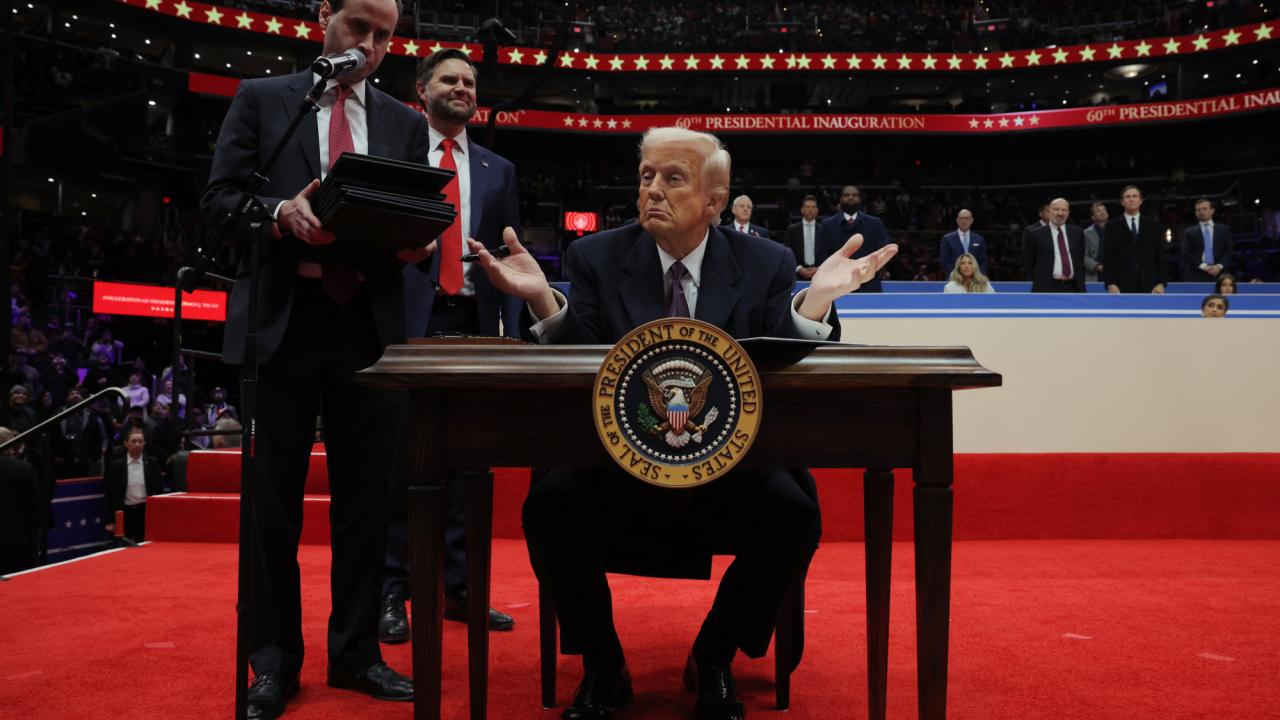
Donald Trump has reiterated that he could impose a blanket tariff of 25% on all imports from Mexico starting February 1.
If US President Donald Trump unilaterally imposes tariffs on Mexico, he could violate the United States-Mexico-Canada Agreement (USMCA), a US Congressional analysis warned.
Trump has reiterated that he could impose a blanket tariff of 25% on all imports from Mexico starting February 1, 2025.
“Such tariffs could violate the USMCA and Mexico could file a dispute over them. Potential Mexican retaliatory tariffs on U.S. exports could affect billions of dollars of U.S. exports,” the same analysis projects.
From a broader perspective, Trump has expressed his intention to impose a tariff of between 10 and 20% on all US imports of goods.
He has also threatened to impose tariffs on countries to achieve foreign policy goals, such as pressuring Mexico to help the United States reduce immigration at the southern border.
He even promised to impose a 60% tariff on imports of products from China, although he later said it would only be an additional 10%. In all these cases, he has not given details on how he intends to do so.
As a result, Trump has proposed that his administration would raise billions of dollars from tariff increases, which would help pay for the renewal of his 2017 tax cuts.
To that end, one of his first actions in his second term as President of the United States was to create the External Revenue Service, although the United States Customs and Border Protection Office already performs that function for the United States.
Many analysts have suggested that the International Emergency Economic Powers Act (IEEPA) is one of the most likely options for President-elect Trump's proposed tariffs.
This likelihood was strengthened by the recent related case of Colombia. The Trump administration announced on January 26 that it would not go ahead with plans to impose a tariff of up to 50% on Colombia, threats Trump made after the country turned away U.S. military planes carrying detained Colombian immigrants.
“The Government of Colombia has agreed to all of President Trump’s terms, including the unrestricted acceptance of all illegal aliens from Colombia returning from the United States, including on U.S. military aircraft, without limitations or delays,” the White House announced in a statement.
The statement said the White House had drafted a legal memorandum outlining Trump's authority to use the International Emergency Economic Powers Act, which gives the president broad authority to control economic transactions if they declare an emergency.
INTEGRATION WITH MEXICO
Mexico ranks first among the United States' trading partners in merchandise trade, and 80% of Mexican exports go to the United States.
In bilateral trade in products from January to November 2024, Mexican exports totaled US$ 466,626 million and US exports were US$ 309,421 million.
According to the U.S. Department of Commerce, the average manufactured product from Mexico contains 40% U.S. content, and the average manufactured product from Canada contains 25% U.S. content.
Much of the economic relationship between these countries takes place in the context of the USMCA, which came into force in July 2020, replacing the North American Free Trade Agreement, in force since January 1994.
Mexican government data shows that the United States is the largest source of Foreign Direct Investment (FDI) in Mexico, representing 40.9% of total FDI in Mexico from 2006 to September 2024, with a cumulative total of US$242,864 million in that period.
TARIFF RESOURCES
Here are four options Trump has for imposing tariffs on a large number of products:
1. Section 232 of the Trade Expansion Act of 1962
This law allows the president to restrict imports to protect national security. During his first term, Trump imposed tariffs on steel and aluminum and even threatened to apply them to cars.
However, this process is not a quick one. First, the Commerce Department must investigate, which can take up to 270 days. Then, the White House has a further 90 days to decide whether to take action.
2. Section 301 of the Trade Act of 1974
This was the way Trump imposed tariffs on Chinese products during his first term. He could use it again to increase them in a second term.
A new investigation against China or another country could take up to a year. However, the U.S. Trade Representative's office could speed up the process.
3. International Emergency Economic Powers Act of 1977
Trump has proposed imposing a 10 or 20 percent tariff on all imports. To achieve this, he could declare the trade deficit a national emergency.
This would give it the power to use the International Emergency Economic Powers Act of 1977 to impose tariffs or limit imports and reduce the trade imbalance.
Although no president has ever used the IEEPA to impose tariffs, President Richard Nixon authorized a 10% tariff on all imports into the United States in response to a currency crisis using the IEEPA's precursor statute, the Trading with the Enemy Act of 1917 (TWEA).
This remains the only time a President has used emergency authority, such as that provided by the IEEPA, to impose a tariff.
If Congress approves these tariffs, it will not need to take any further action to keep them in place. But if Congress disapproves the tariff, it has several options for expressing its disapproval.
Congress could terminate the underlying national emergency by enacting a joint resolution of disapproval using the expedited procedures provided for in the National Emergencies Act. Congress could also amend the IEEPA to restrict its use in imposing tariffs.
4. Section 338 of the Tariff Act of 1930
No president has used Section 338 of the 1930 Tariff Act in nearly 95 years. However, Trump could apply tariffs of up to 50% to countries that “discriminate” against the United States. This could affect nations without a trade agreement or with a high surplus. Although the rule remains in effect, some believe that Section 301 has superseded it.










